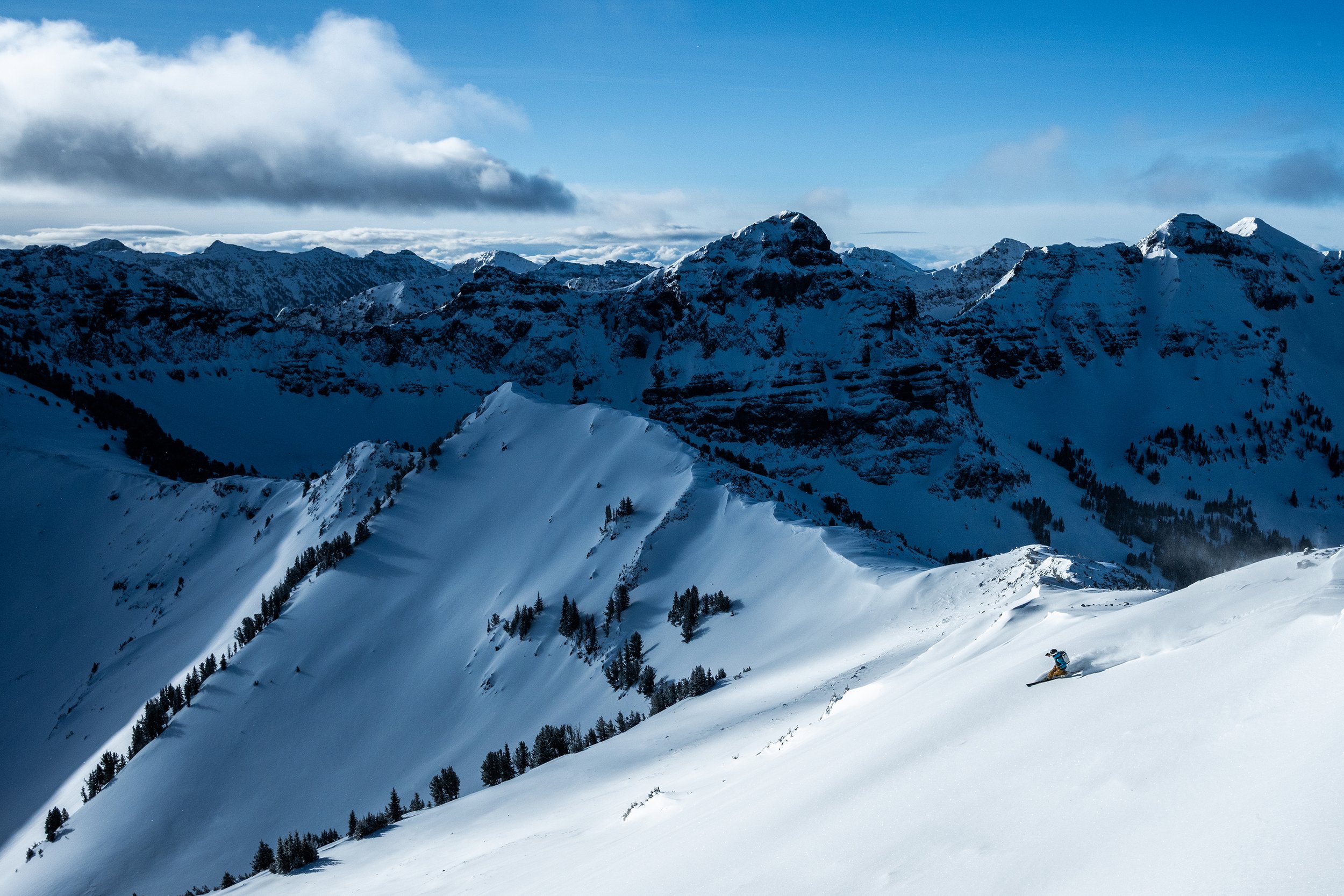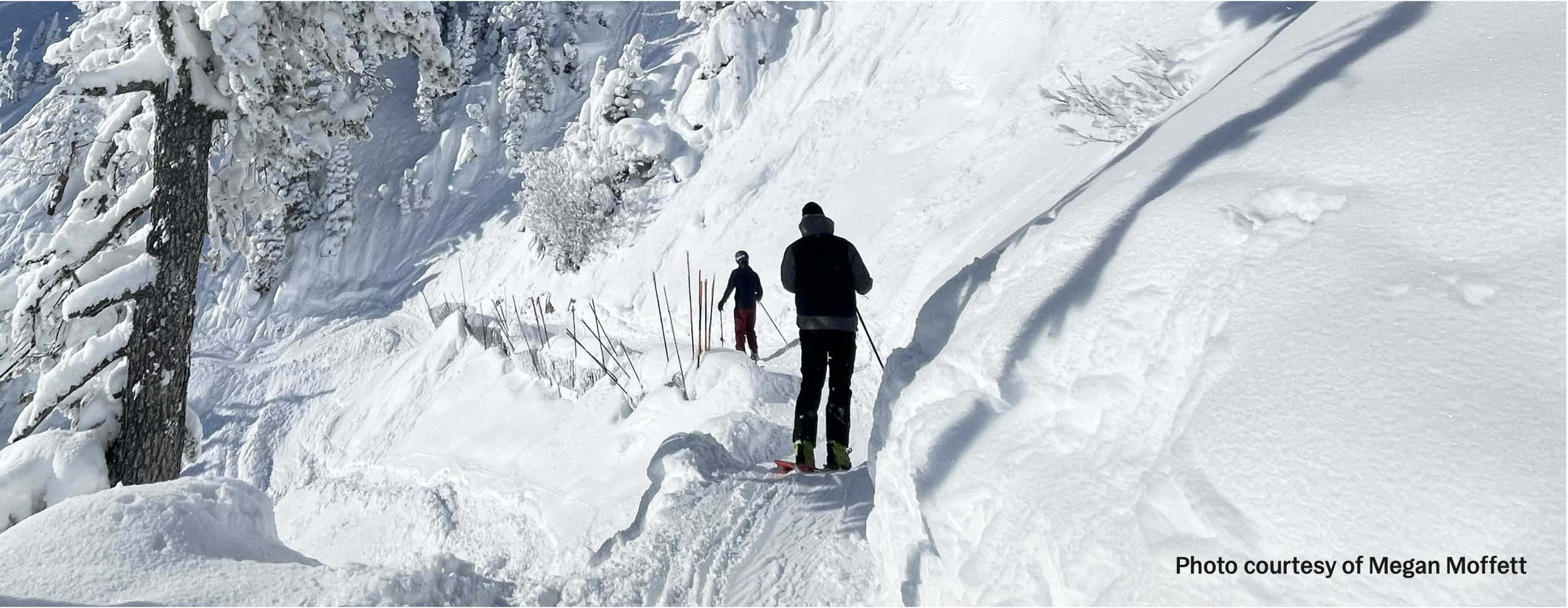
Backcountry Skiing Safety in Bozeman
A Community Responsibility
Written by: Sage Curtis
Bozeman, Montana is a gateway to some of the most breathtaking and rugged backcountry skiing terrain in the country. With easy access to the Bridger and Gallatin ranges, outdoor enthusiasts flock to the area in search of fresh powder and adventure. However, with that freedom comes responsibility — the responsibility to understand and mitigate avalanche risks. Despite the availability of education and resources, some skiers venture into dangerous terrain under prepared, which puts themselves and others at risk.
The Need for Avalanche Education
Avalanche-prone terrain is unforgiving. The conditions that lead to an avalanche can be unpredictable — and once a slide starts, it moves with immense force. Montana has seen its share of tragic avalanche fatalities, many of which could have been prevented with proper training and preparation.
Education is the first line of defense. Knowing how to assess avalanche conditions, make safe route choices, and execute a rescue efficiently can mean the difference between life and death. Unfortunately, some skiers may underestimate the need for education and assume that having a beacon, probe, and shovel is enough without fully understanding how to use them.
Avalanche education is not just for experts.
Beginners and intermediate skiers benefit immensely from formal training. Attending an Avalanche Level one course, for example, provides hands-on experience in assessing avalanche terrain, understanding snowpack stability, and executing effective rescue strategies. Additional courses, such as Level two Avalanche Training, deepen knowledge and practical skills, preparing backcountry users for more complex scenarios.
To find a local avalanche course, try searching online for “avalanche courses near me.”
To gain insight into avalanche safety, I spoke with Alex Marienthal, an avalanche specialist at the Gallatin National Forest Avalanche Center (GNFAC). Marienthal has years of experience studying snow science and educating backcountry users on avalanche awareness and risk management. “Most avalanches, whether they are natural or human-triggered, usually occur during storms or after. Especially human-triggered avalanches are accidents we do see during storms, but during or immediately after is when they occur, so that’s a good time to avoid avalanche terrain,” Marienthal said.
Essential Equipment: More Than Just Carrying It
Backcountry skiers and snowboarders should never enter avalanche terrain without three critical pieces of gear: an avalanche transceiver (commonly called a beacon), a probe, and a shovel. However, simply having the gear is not enough — proficiency in its use is crucial.
Beacons emit signals that help locate buried individuals, but effective use requires regular practice in both search and rescue modes.
Probes pinpoint the exact location of a buried skier, and knowing how to deploy and use them quickly can drastically cut down rescue times.
Shovels are essential for digging out a buried person; however, strategic digging techniques can make rescues significantly faster and more effective.
Some skiers at Bridger Bowl’s Schlasman’s Lift (where carrying a beacon is required) assume that simply having a beacon is enough.
However, without proper training, that beacon may be useless in an emergency.
Skiers need to practice beacon searches and rescue scenarios regularly to be sure they know how to use them efficiently under pressure.
One of the best ways to stay proficient with rescue gear is to participate in community beacon drills or practice sessions held by local organizations. These drills simulate real avalanche burial situations, reinforcing the need for speed and efficiency in locating and extracting a buried person.
“The key things for people to know are how to identify avalanche terrain — slopes that are steeper than 30 degrees or areas directly below those slopes. It takes time and knowledge to be able to recognize all types of avalanche terrain, whether you’re caught in the avalanche or not, but being able to recognize and avoid avalanche terrain is the first step to staying safe. Understanding the meteorological factors that go into creating avalanches is crucial. Avalanches are usually correlated with bigger storms that create more dangerous avalanche conditions. People who are going out into this terrain need to have their rescue gear, and it’s important to know how to use it, otherwise, it’s pointless,” says Alex Marienthal, an avalanche specialist.
Gallatin National Forest Avalanche Center: A Key Resource
The Gallatin National Forest Avalanche Center (GNFAC) is a pillar of avalanche education and forecasting in the region. Based in Bozeman, the GNFAC provides daily avalanche forecasts, educational classes, and field courses to help skiers, snowboarders, and snowmobilers understand snow conditions and avalanche risks.
The center offers:
Avalanche awareness classes covering terrain assessment, decision-making, and rescue techniques.
Hands-on field courses where participants practice using their beacon, probe, and shovel in real-world scenarios.
Daily avalanche reports provide critical updates on snow stability, weak layers, and recent activity in the Gallatin, Madison, and Bridger ranges.
Snow science education, teaching backcountry users how to analyze the layers of the snowpack and understand weak points that can trigger avalanches.
By taking advantage of these resources, backcountry travelers can make more informed decisions and improve their chances of staying safe in the mountains.
Marienthal notes that public awareness of avalanche education tends to increase after tragedies: “People seem to take avalanche education more seriously when they are at a class, and unfortunately, people become more aware when there is a tragedy, and it affects the community. That’s when we see big steps forward — more people getting educated and being more cautious. When people live those experiences, it’s a big change in behavior a lot of the time.”
Bridger Bowl and Schlasman’s Chair: Beacon Requirements and Challenges
Bridger Bowl offers a unique lift-accessed backcountry experience with Schlasman’s Chair, a lift that requires all riders to carry a beacon, making it the only place in the United States to offer this. The idea behind this requirement is to ensure that anyone venturing into this terrain has a basic level of avalanche safety equipment. However, there is no enforcement of knowledge, and many people carry a beacon but don’t actually know how to use it effectively.
The ski patrol at Bridger regularly emphasizes the need for training, but many skiers take the beacon requirement lightly.
A beacon alone does not save lives; the skill to use it correctly does.
This underscores a more significant concern in backcountry safety: education and equipment must complement each other. To improve safety, local ski shops and avalanche centers should work together to offer pre-season refresher courses for Schlasman’s skiers, ensuring that everyone knows how to conduct a proper beacon search before heading into uncontrolled terrain.
Building a Safer Backcountry Community
Education doesn’t stop with formal courses. The ski community in Bozeman plays a crucial role in reinforcing a culture of responsibility. Here’s how:
Experienced backcountry users can mentor newcomers, teaching them how to interpret avalanche forecasts and make safer choices.
Regular practice sessions for beacon searches and rescue techniques can help ensure preparedness.
Open communication about conditions, near misses, and best practices can help create a more safety-conscious community.
Local gear shops and ski organizations can host free workshops on avalanche safety, ensuring that knowledge is accessible to everyone.
Online forums and social media groups can be used to discuss current snow conditions and provide real-time updates from skiers in the field.
Backcountry skiing in Bozeman is a privilege, but it comes with serious risks.
The more people commit to learning, practicing, and sharing knowledge, the safer everyone will be. Avalanche education is not just about individual safety; it’s about looking out for the entire backcountry community. For those venturing into the mountains, take the time to get educated, practice your skills, and encourage others to do the same. It could save a life—including your own.
Additional Resources for Backcountry Safety
Gallatin National Forest Avalanche Center (GNFAC): www.mtavalanche.com
American Institute for Avalanche Research and Education (AIARE): www.avtraining.org
Avalanche.org: Nationwide avalanche forecasts and safety tips
Local Beacon Training Parks: Practice your beacon search skills in controlled environments
By taking advantage of these resources and fostering a culture of education and safety, Bozeman’s backcountry community can continue to enjoy the mountains while minimizing risks. Stay safe, stay informed, and always ski with knowledge and caution.


